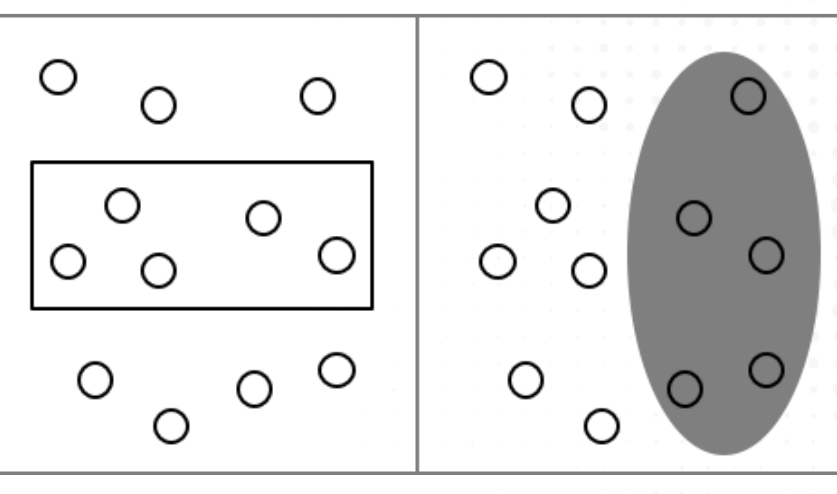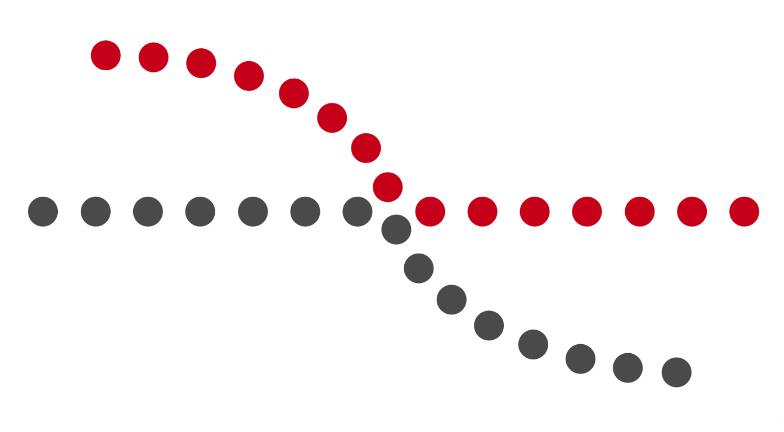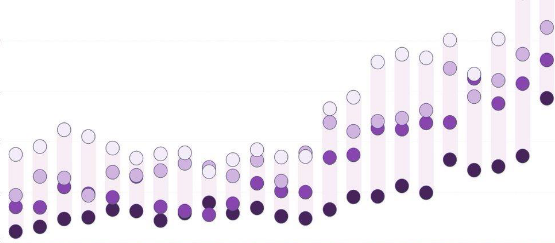In the early twentieth of the last century, the psychological subarea of the so called “gestalt psychology” emerged. “Gestalt” is German and means as much as “shape”, “figure”. The gestalt psychology expressed ideas about how a human mind perceives visuals and developed the “gestalt principals”, which explain, under what circumstances the human mind groups visual elements.
These principle still play a role in modern design.
It is not only considerate, to know how they work, we can also make use of them to emphasize the message of our dashboard.
In the following, we will give a short overview about the 6 gestalt principles
The principle of proximity states, that we interpretate visual objects, that are close together, as a group. In practice that means, that we shouldn’t place two objects close to each other, if they are not connected, but if they are, we can strengthen the understanding of their connection by placing them together closely.

If objects are similar, if they have the same color, size, shape or orientation in the room ( for example arrows ), we interpretate them as a group. According to this principle of similarity, we should design elements, that belong together in the same size, color, font etc.

The principle of enclosure is very intuitive and we probably used it a hundreds of times without even knowing, that it is a gestalt principle: when we draw a box around some visual objects and enclose them with it, we make sure, that they are perceived as a group.

The principle of continuity states, that we are inclined to interpretate visual objects as belonging together, if they are aligned on a smooth, continuing line rather than on a ragged one. As a conclusion, it is wise to arrange the elements in the same smooth order, as we want the reader to see them.

When we see points, which are arranged in the shape of a circle, we’ll perceive them as one circle, although it isn’t. This is the principle of closure. It gives us the possibility, to open up a shape if needed while still keeping the whole shape.

The last principle is the principle of common fate. It is actually for moving objects and states, that if objects move in the same direction, we perceive them as a group, for example a flock of birds. But we can use this principle, if we, for example, work with perspective and arrange shrinking objects on a line of perspective as if they would move in that direction; the human mind is then inclined to perceive them as a group.

